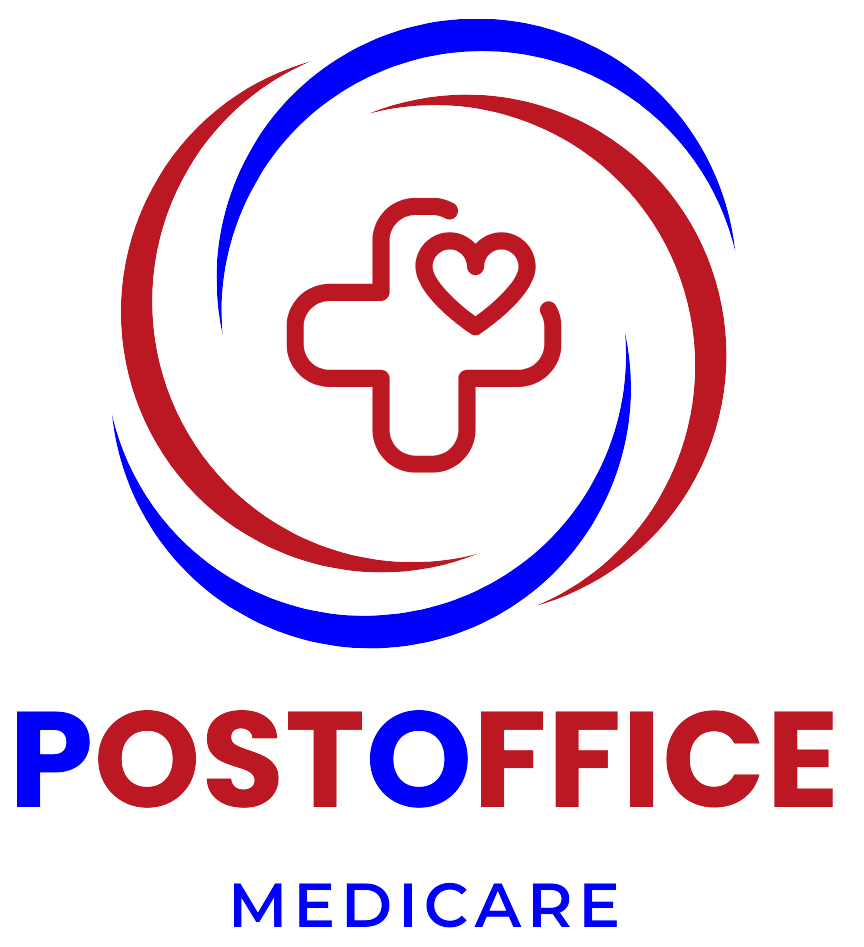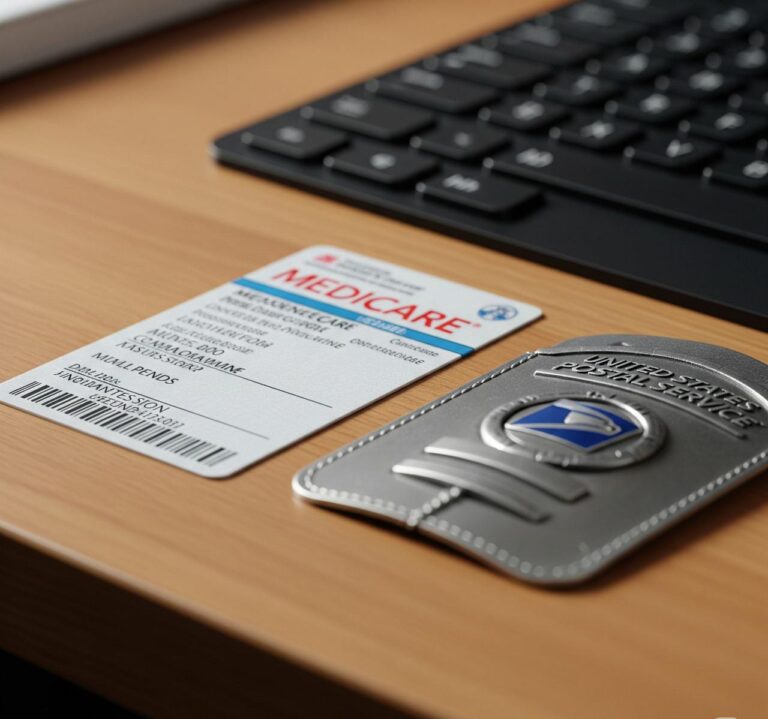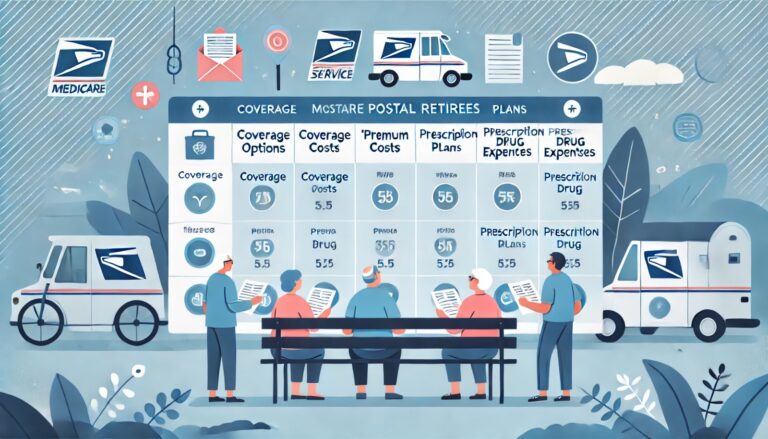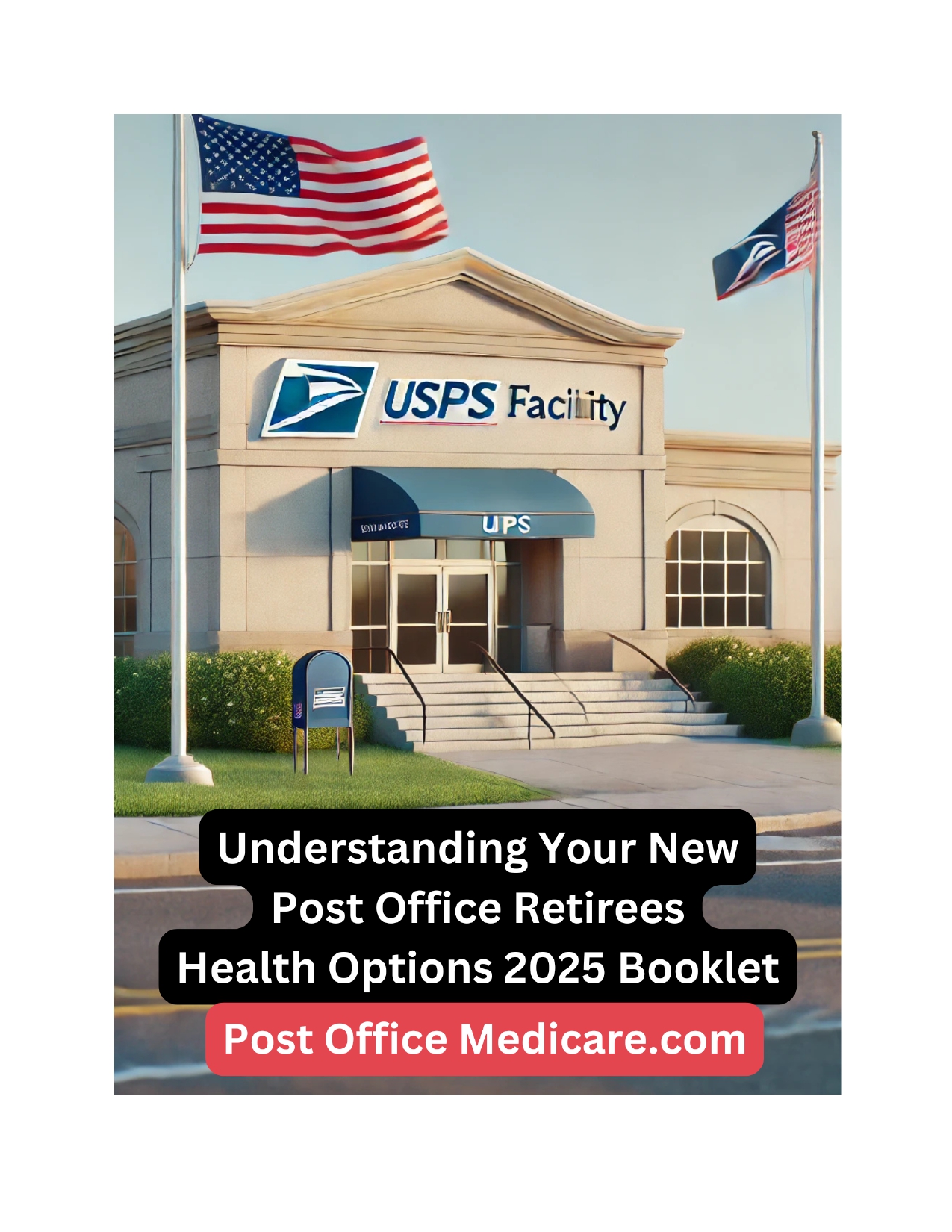Post Office Medicare Plan for Retirees in the USA: What You Need to Know
For decades, the United States Postal Service (USPS) has provided retirement benefits to its employees, including healthcare coverage. As postal workers transition into retirement, healthcare needs often become a top priority. One important topic for USPS retirees is the integration of Medicare with their federal health insurance benefits. The “Post Office Medicare Plan” is a term often used to refer to the way retirees from USPS navigate healthcare benefits through a combination of Medicare and their existing Federal Employees Health Benefits (FEHB) plan. In this article, we will break down how Medicare works for USPS retirees, how it integrates with FEHB, and what options retirees have when planning for healthcare costs in retirement
Understanding the Basics: Medicare and FEHB
Before diving into the specifics of the Post Office Medicare Plan, it’s essential to understand the two major components: Medicare and FEHB.
Medicare: Medicare is the federal health insurance program available to individuals aged 65 and older, as well as some younger people with certain disabilities. It consists of four parts:
○ Part A: Hospital Insurance (covers inpatient hospital stays, skilled nursing facility care, hospice care, and some home health care)
○ Part B: Medical Insurance (covers outpatient care, doctor visits, preventive services, and medical supplies)
○ Part C: Medicare Advantage Plans (alternative to Original Medicare that bundles Parts A, B, and sometimes D into a single plan, often including extra benefits)
○ Part D: Prescription Drug Coverage (covers the cost of prescription medications)
FEHB: The Federal Employees Health Benefits (FEHB) Program is the health insurance program for federal employees and retirees, including USPS employees. It offers a wide selection of health plans, including both fee-for-service plans and health maintenance organizations (HMOs). USPS retirees who have met the eligibility requirements can continue their FEHB coverage into retirement.
How Medicare and FEHB Work Together for USPS Retirees
When USPS employees retire and become eligible for Medicare (typically at age 65), they have the option to enroll in Medicare while keeping their FEHB plan. Here’s how the two programs can work together:
- Medicare Parts A and B: When a retiree enrolls in Medicare Parts A and B, Medicare generally becomes the primary payer for covered services, and FEHB becomes the secondary payer. This means that Medicare pays first for medical expenses, and FEHB covers the remaining costs. For many retirees, this combination results in lower out-of-pocket costs, as both programs work together to cover services that may not be fully paid for by one plan alone.
- FEHB without Medicare: Retirees are not required to enroll in Medicare Part B (which has a monthly premium). They can choose to rely solely on their FEHB plan for healthcare coverage. However, this option may result in higher out-of-pocket costs because FEHB will be the primary payer for all medical services. Furthermore, some FEHB plans may offer incentives to encourage retirees to enroll in Medicare Part B by reducing premiums or providing additional benefits.
USPS Medicare Integration and Recent Reforms
One major development affecting USPS retirees’ healthcare benefits is the Postal Service Reform Act of 2022. This legislation aims to address the financial challenges faced by USPS while also restructuring healthcare benefits for future retirees.
A key component of the reform is the creation of the Postal Service Health Benefits (PSHB) program, which will take effect in 2025. The PSHB program will operate similarly to FEHB but will require future USPS retirees to enroll in Medicare when they become eligible (at age 65) if they want to continue receiving employer-sponsored health benefits. The goal of the reform is to ensure that retirees have comprehensive healthcare coverage while also reducing costs for USPS by integrating more effectively with Medicare.
Key points of the Postal Service Reform Act include:
- Mandatory Medicare Enrollment: USPS retirees who turn 65 on or after 2025 will be required to enroll in Medicare Part A and Part B to maintain coverage under the PSHB program. This integration is intended to lower healthcare costs by making Medicare the primary payer for most medical services, while the PSHB plan acts as a secondary payer.
- Current Retirees: Those who retired before 2025 and are already 65 or older will not be required to enroll in Medicare Part B if they haven’t done so already. However, they can choose to enroll in Medicare at any time without facing the late enrollment penalty, provided they were enrolled in FEHB during their retirement.
- Medicare Integration: The shift to mandatory Medicare enrollment for future retirees is designed to better integrate FEHB or PSHB with Medicare, similar to the way private-sector retirees often use Medicare as their primary coverage alongside employer-sponsored retiree plans.
Pros and Cons of Enrolling in Medicare for USPS Retirees
Many USPS retirees wonder whether enrolling in Medicare (specifically Part B) is worth it, given the added cost of monthly premiums. There are several advantages and potential disadvantages to consider when making this decision:
Advantages of Enrolling in Medicare
- Lower Out-of-Pocket Costs: With Medicare Parts A and B as primary coverage and FEHB as secondary, many retirees find that their out-of-pocket costs for doctor visits,hospital stays, and other services are reduced. This can be particularly beneficial for retirees who need frequent medical care or have chronic health conditions.
- Expanded Provider Network: Medicare has a nationwide network of providers, giving retirees greater flexibility when choosing doctors, specialists, and hospitals. This can be a significant advantage for retirees who move or travel frequently.
- Increased Coverage for Preventive Services: Medicare offers a range of preventive services, such as annual wellness visits, screenings, and vaccinations, which are often fully covered. By enrolling in Medicare, retirees can take advantage of these services without paying out-of-pocket.
- Prescription Drug Coverage: Many retirees who enroll in Medicare also sign up for a Medicare Part D prescription drug plan or a Medicare Advantage plan that includes drug coverage. These plans can offer more comprehensive coverage for medications than some FEHB plans, helping retirees manage prescription drug costs.
Potential Drawbacks of Medicare Enrollment
- Part B Premiums: Medicare Part B comes with a monthly premium, which increases based on income. For some retirees, particularly those on a fixed income, this additional cost may be a financial burden. The 2024 standard premium for Medicare Part B is $174.70, but high-income retirees may pay more.
- Coordination of Benefits: Managing the coordination between Medicare and FEHB can sometimes be confusing. While Medicare acts as the primary payer, retirees must ensure that their FEHB plan complements Medicare effectively to avoid gaps in coverage.
- Duplicate Coverage: For retirees who are in good health and don’t require frequent medical care, paying for both Medicare and FEHB may seem unnecessary. FEHB provides comprehensive coverage, so some retirees may prefer to forgo Medicare Part B to avoid the extra expense, though this comes with potential risks.
Making the Best Choice for Your Retirement
Deciding whether to enroll in Medicare, keep FEHB, or combine the two requires careful consideration of your healthcare needs, financial situation, and personal preferences. Here are some factors to keep in mind:
1. Evaluate Your Health Needs
If you expect to require frequent medical services or have chronic health conditions, enrolling in Medicare (particularly Parts A and B) may help reduce out-of-pocket costs. Conversely, if you’re in good health and rarely see doctors, you may choose to rely solely on your FEHB plan.
2. Compare Costs
Compare the premiums and out-of-pocket costs of your FEHB plan with Medicare. Consider how much you would pay in Medicare premiums, co-pays, and deductibles versus sticking with only FEHB coverage. Some FEHB plans may offer lower premiums or additional benefits to retirees who enroll in Medicare Part B.
3. Consider Long-Term Care Needs
As you age, your healthcare needs may increase, and having comprehensive coverage through both Medicare and FEHB can provide peace of mind. Medicare does not cover long-term care, so you may want to explore additional coverage options for long-term care if needed.
4. Check for Incentives
Some FEHB plans offer incentives to encourage Medicare enrollment, such as lower premiums or enhanced benefits for retirees who sign up for Medicare Part B. Check with your plan to see if these incentives apply to you.
Conclusion: Planning for Healthcare in USPS Retirement
The Post Office Medicare Plan for retirees involves integrating Medicare with the FEHB or the upcoming PSHB programs, providing comprehensive coverage for retirees as they navigate their healthcare needs in later life. With the passing of the Postal Service Reform Act, the landscape of healthcare for USPS retirees will evolve, particularly for those retiring after 2025. By carefully considering the costs and benefits of Medicare enrollment, USPS retirees can make informed decisions to ensure their healthcare needs are met while managing out-of-pocket costs.
Understanding how Medicare and FEHB (or PSHB) work together will empower retirees to choose the best coverage options for their unique situations and enjoy a healthier, more financially secure retirement.
Read More Blog
Follow Us On:- Facebook








